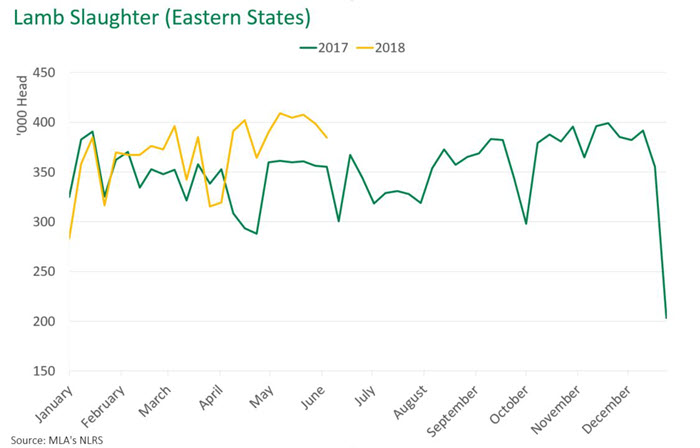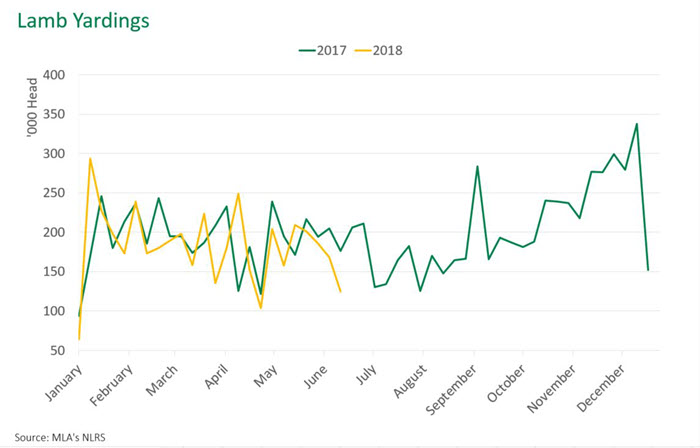Sheepmeat remains resilient
Despite poor seasonal conditions, the sheepmeat market remains strong – supported by demand and tightening supply.
Slaughter
Ongoing dry conditions have seen lamb slaughter numbers remain higher than expected, as many producers continue to offload stock. The number of animals going to processors is beginning to trend down, however, eastern states lamb weekly slaughter average for June remains 8% higher year-on-year, at just over 367,000 head.
Eastern states mutton slaughter fell quite substantially over the last fortnight, taking into account the public holiday last week, with weekly slaughter averages for June down 43% from the same period last year.

Exports
Australian sheepmeat exports in May totalled almost 43,200 tonnes shipped weight (swt) – the largest calendar month ever recorded for combined lamb and mutton exports.
The record month brought year-to-date lamb exports to 117,000 tonnes swt, an increase of 14% on 2017 levels. This year-to-May total is the largest ever start to the year and has been driven by growth in all key destinations – the Middle East, China and the US.
Prices
Despite the dry conditions, lamb prices have continued on an upward trajectory, with markets supported by strong export and processor demand. Last week, the Eastern States Trade Lamb Indicator (ESTLI) climbed above 650¢/kg cwt for the first time since January, bringing it to within 2% of the same time last year. The ESTLI opened this week at 647¢/kg cwt.
The eastern states mutton indicator opened this week at 484¢/kg cwt – 5% lower year-on-year, although up considerably from the year-to-date low of 368¢/kg cwt on the 19February.
Saleyard throughput

National lamb saleyard numbers averaged 159,773 head per week in June-to-date, a 17% decrease from this time last year – with more producers opting to go direct-to-works. Sheep yardings have averaged close to 75,000 head/week in June so far, up 12% year-on-year.



